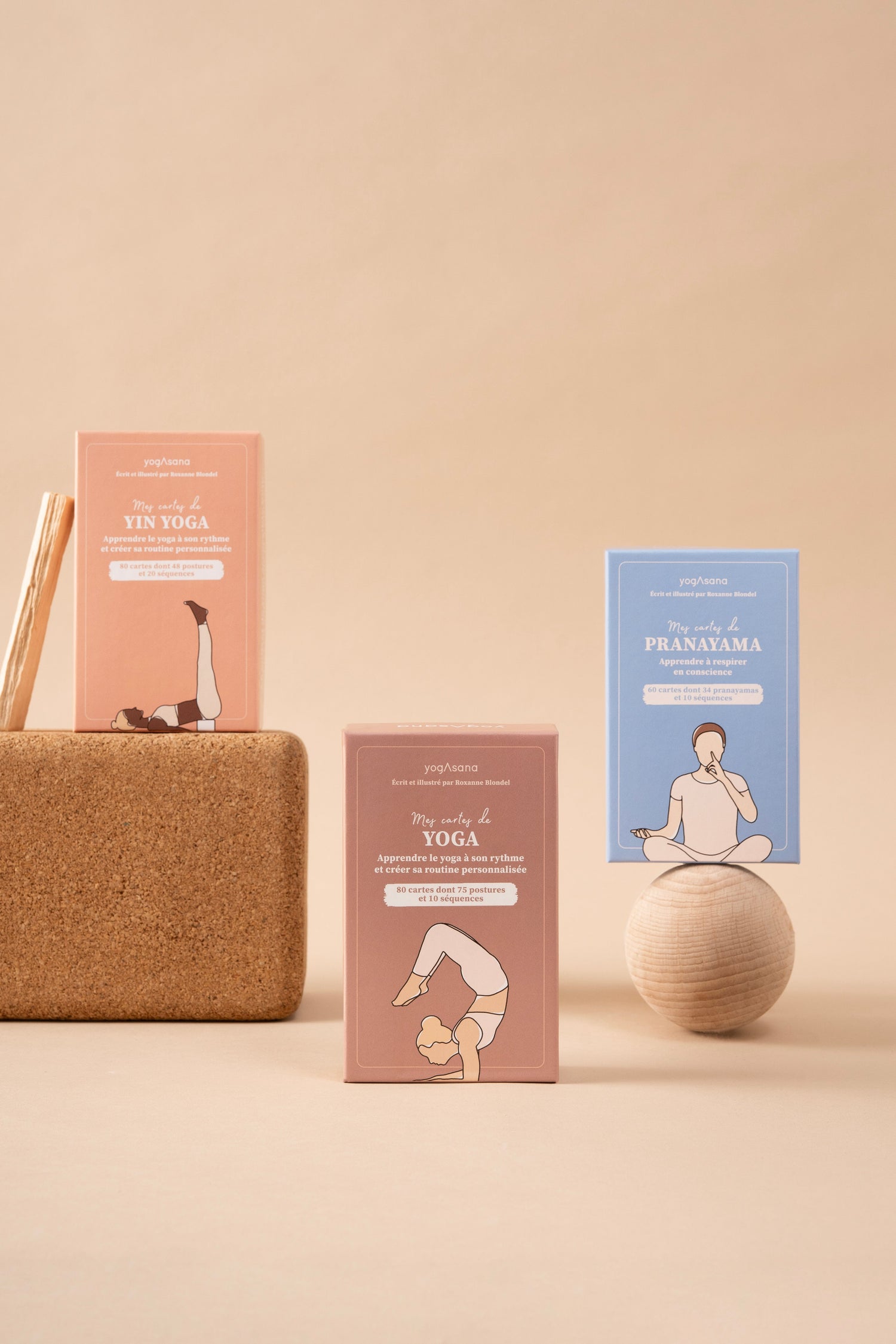Downward facing dog

A great classic of yoga postures, downward dog is a fundamental posture. Although suggested as a "resting" posture by some teachers, downward dog is not the least challenging! And for good reason, it is a complete posture that allows you to engage your entire body.
How to perform the posture?
- Start on all fours, in tabletop pose. Knees below hips, hands below shoulders.
- On the inhale, hook the mat with the toes, lift the knees and bring the pelvis towards the sky.
- As you exhale, straighten your legs. Your heels come closer to the floor.
- Hands and feet actively push off the ground.
- Release your head and stretch your back.
- Breathe.
The alignments to know 👇
- The fingers of the hands are spread apart and the palms of the hands sink into the ground.
- The spine is straight, the pelvis stretches towards the sky.
- The shoulders and head are relaxed, loose.
- Hands and feet are hip-width apart.
- We try to stretch our arms in downward dog. Be careful for hyperlax people, it is possible to micro-bend the elbows inwards .
- Heels point towards the floor. It's okay if they don't touch the floor. Better to keep your spine straight and bend your knees!
What are the benefits for the body and mind?
- Strengthens arms and legs.
- Tones the entire body.
- Stretches fingers and thighs.
- Calm the mind.
- Improves digestion.
- Relieves headaches, sleep disturbances and back pain.
What is the symbolic significance of this posture?
Downward dog is a fundamental posture.
In this posture, the yogi leans on his palms and soles of his feet. This base connected to the Earth refers us to the four Purushhârta, the fundamental goals of existence : Dharma, Artha, Kâma, Moshka. The four Purushârtha refer to the four stages of Bhrâmane's life.
Focus on the four Purushhârta
1. DHARMA
What sustains. These are the universal laws, social, spiritual, political but also personal.
2. ARTHA
The goal, the objective. It is the material aspect of life, on a professional but also family level.
3. KÂMA
He refers to enjoyment, to the pleasure of fully enjoying what life has to offer us.
4. MOSHKA
Liberation, total freedom. This is the ultimate stage; the one where one attains absolute Grace through the understanding of the Whole. Moshka actually stems from the first three pillars.



4 comments
Merci pour les explications car je pense que je ne la faisait pas la posture comme il faut.
Coucou, 🤸♀️je trouve cela très sympa d’avoir de tes nouvelles. Moi j’avais déjà une petite question sur le chien tête en bas que j’adore faire mais il n’est pas toujours facile quand on se repositionne de mettre le pied entre les deux mains. Pourrais-tu nous en faire une petite vidéo. je pense qu’il doit y avoir une manière de lever son bassin, je ne sais pas 🤷♀️ merci 🙏
J’adore ! très clair , concis , pas long ! TOP . Merci
Merci pour cet article
Merci pour la gratuité du partage c est si rare …. Même dans le monde du yoga